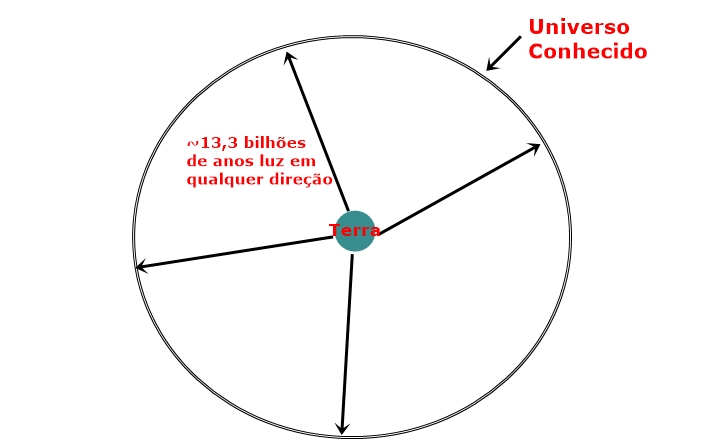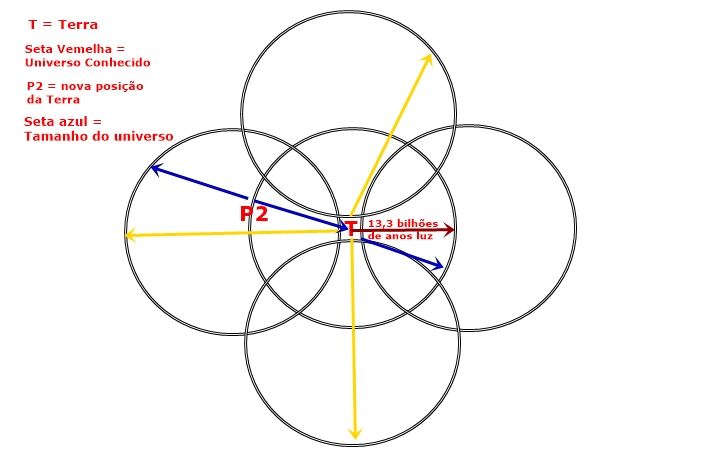
Figura 1

Figura 2

Figura 1 |

Figura 2 |
A doubt that I have had for years and that intrigues me a lot is the following: in Figure 1, which I am attaching, very simply, I have placed the Earth and the size of the observable Universe. If I'm correct, in any direction we look, we always have the same distance, that is, about 13.3 billion light years. That would place the Earth at the center of the Big Bang and, consequently, at the center of the Universe, correct? Assuming that the Earth is not at the center, but at the edge of our Universe, at position P2 in Figure 2, then the size of the Universe would become 2 times the 13.3 billion light-years (blue arrows in Figure 2). According to this idea, the Universe would be older and larger in relation to what is usually indicated. How can this be explained?
Regarding the question related to Figure 1: yes, whichever direction we look at, we arrive at the conclusion that the Observable Universe extends for about 46.508 billion light years.
Note: The current estimated age of the Universe is approximately 13.8 billion years. If the Universe were not expanding, the radius of the observable Universe would be 13.8 billion light years. However, due to the expansion of the Universe, we are able to see objects that in the past were much closer to us. Once the calculations are done, we obtain values close to 46.5 billion light years for the radius of the observable Universe.
From what we can observe, the Universe, when considered on a large scale (millions of light years), is homogeneous (all its points are equivalent) and isotropic (all directions are equivalent). An observer located on a planet in a galaxy 1 billion light years away from ours will have exactly the same perception: his planet seems to be at the center of everything. The same goes for any other observer anywhere in the Universe. We can place the Earth at the center of the Universe, but that's just a choice of a reference system, which in some situations may be convenient, but which does not give the Earth a special meaning.
Regarding the case of Figure 2, in a way, it has already been answered. An observer at P2 would not have the feeling of being on the periphery of the universe. He would still feel at the center like we do here on Earth. For him, the observable Universe would still have the same radius as in Figure 1. Part of our Observable Universe would not be accessible to P2, a part would be common to both and a part of P2's Observable Universe would not be accessible to us here on Earth. In Figure 2, each circle represents the Observable Universe for an observer located in the center of this circle. Some of the represented observable universes have parts in common and some don't.
Here is the basis of all this: one of the most consensual models for our Universe uses a mechanism called
Inflation (at the very beginning of the Big Bang), during which the universe expanded by a factor of the order of 10^50 (1 followed by 50 zeros), and then reverts to its "normal" expansion. Inflation enlarged the Universe in such a way that only a portion is observable from each point.
It should be noted that when we talk about these things (Big Bang model, Inflation, etc.), we are talking about the construction of theoretical models that intend to describe what we can observe as well as possible. A good model (or a good theory) is one that is not contradicted by observation and that, moreover, can predict new situations that can be tested or observed. This is the case of the Big Bang model with Inflation.
To complete what has been said, the following queries are suggested:
Explosive, inflationary, accelerated and unknown universe (in portuguese)
The Big Bang and the Evolution of the Universe (in portuguese)